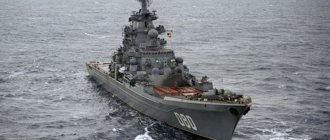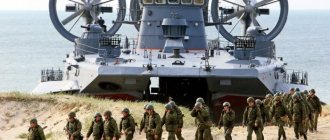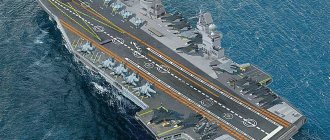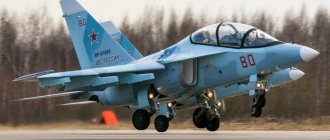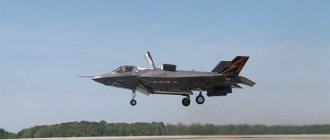Story
During the Cold War, space was one of the arenas for the struggle between the Soviet Union and the United States.
The geopolitical confrontation between superpowers was the main incentive in those years for the development of the space industry. A huge amount of resources have been devoted to space exploration programs. In particular, the US government spent about twenty-five billion dollars on the implementation of the Apollo project, the main goal of which was to land a man on the surface of the Moon. For the 70s of the last century, this amount was simply gigantic. The USSR lunar program, which was never destined to come true, cost the budget of the Soviet Union 2.5 billion rubles. The development of the domestic reusable spacecraft Buran cost sixteen billion rubles. At the same time, fate destined Buran to make only one space flight. Its American counterpart was much luckier. The Space Shuttle made one hundred and thirty-five launches. But the American shuttle did not last forever. The ship, created under the state program “Space Transport System”, carried out its last space launch on July 8, 2011, which ended in the early morning of July 21 of the same year. During the implementation of the program, the Americans produced six shuttles, one of which was a prototype that never carried out space flights. Two ships were completely catastrophic.
Apollo 11 liftoff / ©NASA
From the point of view of economic feasibility, the Space Shuttle program can hardly be called successful. Disposable spacecraft turned out to be much more economical than their seemingly more technologically advanced reusable counterparts. And the safety of flights on the shuttles was questionable. During their operation, as a result of two disasters, fourteen astronauts became victims. But the reason for such ambiguous results of the space travel of the legendary ship lies not in its technical imperfections, but in the complexity of the very concept of reusable spacecraft.
As a result, the Russian Soyuz disposable spacecraft, developed back in the 60s of the last century, became the only type of spacecraft currently carrying out manned flights to the International Space Station (ISS). It should be immediately noted that this does not at all indicate their superiority over the Space Shuttle. The Soyuz spacecraft, as well as the Progress unmanned space trucks created on their basis, have a number of conceptual shortcomings. They are very limited in carrying capacity. And the use of such devices leads to the accumulation of orbital debris remaining after their operation. Space flights on Soyuz-type spacecraft will very soon become part of history. At the same time, today there are no real alternatives. The enormous potential inherent in the concept of reusable ships often remains technically unrealizable even in our time.
The first project of the Soviet reusable orbital aircraft OS-120 Buran, proposed by NPO Energia in 1975 and which was an analogue of the American Space Shuttle / ©buran.ru
About aircraft carriers
Vessels belonging to the first rank are represented by nuclear submarines and large surface ships: aircraft carriers, anti-submarine, missile, heavy and light cruisers and battleships. In matters such as ceremonial procedures, supplies and manning, ships of the first rank are given seniority. If we classify ships, then the first place goes to aircraft carriers, which are the largest special-purpose surface ships. Their striking force is made up of transportable carrier-based aircraft. Air cover, landing troops behind enemy lines and launching air strikes against enemy ships is the main task of the aviation group - helicopters and airplanes.
New US spaceships
In July 2011, American President Barack Obama said: a flight to Mars is a new and, as far as one can assume, the main goal of American astronauts for the coming decades. One of the programs carried out by NASA as part of the exploration of the Moon and the flight to Mars was the large-scale space program “Constellation”.
It is based on the creation of a new manned spacecraft "Orion", launch vehicles "Ares-1" and "Ares-5", as well as the lunar module "Altair". Despite the fact that in 2010 the US government decided to curtail the Constellation program, NASA was able to continue developing Orion. The first unmanned test flight of the ship is planned for 2014. It is expected that during the flight the device will move six thousand kilometers from the Earth. This is about fifteen times further than the ISS. After the test flight, the ship will head towards Earth. The new device will be able to enter the atmosphere at a speed of 32 thousand km/h. According to this indicator, Orion is one and a half thousand kilometers superior to the legendary Apollo. Orion's first unmanned experimental flight is intended to demonstrate its potential capabilities. Testing the ship should be an important step towards its manned launch, which is scheduled for 2021.
According to NASA plans, the Orion launch vehicles will be Delta 4 and Atlas 5. It was decided to abandon the development of Ares. In addition, for the exploration of deep space, the Americans are designing a new super-heavy launch vehicle SLS.
Orion is a partially reusable spacecraft and is conceptually closer to the Soyuz spacecraft than to the space shuttle. Most promising spacecraft are partially reusable. This concept assumes that after landing on the Earth's surface, the ship's habitable capsule can be reused for launch into outer space. This makes it possible to combine the functional practicality of reusable spacecraft with the cost-effectiveness of operating Soyuz or Apollo-type spacecraft. This decision is a transitional stage. It is likely that in the distant future all spacecraft will become reusable. So the American Space Shuttle and the Soviet Buran were, in a sense, ahead of their time.
Orion is a multi-purpose capsule partially reusable US manned spacecraft, developed since the mid-2000s as part of the Constellation program / ©NASA
It seems that the words “practicality” and “foresight” best describe Americans. The US government decided not to put all its space ambitions on the shoulders of one Orion. Currently, several private companies, commissioned by NASA, are developing their own spacecraft designed to replace the devices used today. Boeing is developing the CST-100, a partially reusable crewed spacecraft, as part of its Commercial Crew Development (CCDev) program. The device is designed to make short trips to low-Earth orbit. Its main task will be the delivery of crew and cargo to the ISS.
The ship's crew can be up to seven people. At the same time, during the design of the CST-100, special attention was paid to the comfort of the astronauts. The living space of the device is much more extensive than ships of the previous generation. It will likely be launched using Atlas, Delta or Falcon launch vehicles. At the same time, Atlas-5 is the most suitable option. The ship will land using a parachute and airbags. According to Boeing's plans, the CST-100 will undergo a series of test launches in 2015. The first two flights will be unmanned. Their main task is to launch the vehicle into orbit and test safety systems. During the third flight, a manned docking with the ISS is planned. If the tests are successful, the CST-100 will very soon be able to replace the Russian Soyuz and Progress spacecraft, which have a monopoly on manned flights to the International Space Station.
CST-100 – manned transport spacecraft / ©Boeing
Another private ship that will deliver cargo and crew to the ISS will be a device developed by SpaceX, part of the Sierra Nevada Corporation. The partially reusable monoblock Dragon vehicle was developed under NASA's Commercial Orbital Transportation Services (COTS) program. It is planned to build three modifications of it: manned, cargo and autonomous. The crew of the manned spacecraft, as in the case of the CST-100, can be seven people. In the cargo modification, the ship will carry four people and two and a half tons of cargo.
And in the future they want to use the Dragon for flights to the Red Planet. Why will they develop a special version of the ship - “Red Dragon”. According to the plans of the American space leadership, an unmanned flight of the device to Mars will take place in 2018, and the first test manned flight of a US spacecraft is expected to take place in a few years.
One of the features of the “Dragon” is its reusability. After the flight, part of the energy systems and fuel tanks will be lowered to Earth along with the ship's habitable capsule and can be reused for space flights. This design ability sets the new ship apart from most promising designs. In the near future, “Dragon” and CST-100 will complement each other and act as a “safety net”. If one type of ship for some reason cannot perform its assigned tasks, another will take over part of its work.
Dragon SpaceX is a private transport spacecraft (SC) of SpaceX, developed by order of NASA as part of the Commercial Orbital Transportation (COTS) program, designed to deliver payload and, in the future, people to the ISS / ©SpaceX
The Dragon was launched into orbit for the first time in 2010. The unmanned test flight was completed successfully, and a few years later, namely on May 25, 2012, the device docked with the ISS. At that time, the ship did not have an automatic docking system, and to implement it it was necessary to use the space station’s manipulator.
This flight was considered to be the first ever docking of a private spacecraft to the International Space Station. Let’s make a reservation right away: the Dragon and a number of other spacecraft developed by private companies can hardly be called private in the full sense of the word. For example, NASA allocated $1.5 billion for the development of the Dragon. Other private projects also receive financial support from NASA. Therefore, we are talking not so much about the commercialization of space, but about a new strategy for the development of the space industry, based on cooperation between the state and private capital. Once secret space technologies, previously available only to the state, are now the property of a number of private companies involved in the field of astronautics. This circumstance in itself is a powerful incentive for the growth of technological capabilities of private companies. In addition, this approach made it possible to employ a large number of space industry specialists in the private sphere who had previously been dismissed by the state due to the closure of the Space Shuttle program.
When it comes to the program for the development of spacecraft by private companies, perhaps the most interesting is the project of the SpaceDev company, called “Dream Chaser”. Twelve company partners, three American universities and seven NASA centers also took part in its development.
The concept of the reusable manned spacecraft Dream Chaser, developed by the American company SpaceDev, a division of Sierra Nevada Corporation / ©SpaceDev
This ship is very different from all other promising space developments. The reusable Dream Chaser looks like a miniature Space Shuttle and is capable of landing like an ordinary airplane. Still, the main tasks of the ship are similar to those of the Dragon and CST-100. The device will serve to deliver cargo and crew (up to the same seven people) to low Earth orbit, where it will be launched using the Atlas-5 launch vehicle. This year the ship should carry out its first unmanned flight, and by 2015 it is planned to prepare for launch its manned version. One more important detail. The Dream Chaser project is being created on the basis of an American development of the 1990s - the HL-20 orbital aircraft. The latter’s project became an analogue of the Soviet orbital system “Spiral”. All three devices have a similar appearance and expected functionality. This raises a completely logical question. Should the Soviet Union have scrapped the half-finished Spiral aerospace system?
Warships accepted into the Russian Navy since 2000
Hello, you made us sad the day before by showing how many warships have been decommissioned from the fleet since 2000. Let's look at the opposite trend. How many large warships have been accepted into the Russian Navy since 2000? Only large ships were taken into account. The photo review did not include landing boats and Grachata.
2. Nuclear torpedo submarine K-335 “Gepard”. Commissioning - 2001. Affiliation: Northern Fleet.
3. Multi-purpose nuclear torpedo submarine with cruise missiles K-560 “Severodvinsk”. Commissioning - 2013. Affiliation: Northern Fleet.
4. Strategic missile submarine cruiser K-550 “Alexander Nevsky”. Commissioning - 2013. Affiliation: Pacific Fleet.
5. Strategic missile submarine cruiser “Vladimir Monomakh”. Commissioning – 12/10/14. Affiliation: Pacific Fleet.
6. Special purpose nuclear submarine "AS-31". Commissioning - 2010. Affiliation: Northern Fleet.
7. Special purpose diesel submarine B-90 Sarov. Commissioning - 2008. Affiliation: Northern Fleet.
8. Diesel-electric submarine B-585 “St. Petersburg”. Commissioning - 2010. Affiliation: Northern Fleet.
9. Diesel-electric submarine "Novorossiysk". Commissioning - 2014. Affiliation: Black Sea Fleet.
10. Diesel-electric submarine "Rostov-on-Don". Entry into service – 11/25/14. Affiliation: Black Sea Fleet.
11. Patrol ship "Yaroslav the Wise". Commissioning - 2009. Affiliation: Baltic Fleet.
12. Corvette “Guarding”. Commissioning - 2008. Affiliation: Baltic Fleet.
13. Corvette “Savvy”. Commissioning - 2008. Affiliation: Baltic Fleet.
14. Corvette “Boikiy”. Commissioning - 2008. Affiliation: Baltic Fleet.
15. Corvette “Staudy”. Commissioning - 2008. Affiliation: Baltic Fleet.
16. Rocket ship "Tatarstan". Commissioning - 2003. Affiliation: Caspian Flotilla.
17. Rocket ship "Dagestan". Commissioning - 2012. Affiliation: Caspian Flotilla.
18. Small artillery ship “Astrakhan”. Commissioning - 2006. Affiliation: Caspian Flotilla.
19. Small artillery ship "Volgodonsk". Commissioning - 2011. Affiliation: Caspian Flotilla.
What do we have?
In 2000, RSC Energia began designing the Clipper multi-purpose space complex. This reusable spacecraft, somewhat reminiscent of a smaller shuttle, was supposed to be used to solve a wide variety of problems: cargo delivery, evacuation of the space station crew, space tourism, flights to other planets. There were certain hopes for the project. As always, good intentions were covered with a copper basin of lack of funding. In 2006, the project was closed. At the same time, the technologies developed within the framework of the Clipper project are expected to be used for the design of the Advanced Manned Transport System (PPTS), also known as the Rus project.
The winged version of the Clipper in orbital flight. Drawing by the webmaster based on the Clipper 3D model / ©Vadim Lukashevich
It is the PPTS (of course, this is still only the “working” name of the project), as Russian experts believe, that will be destined to become a new-generation domestic space system, capable of replacing the rapidly aging Soyuz and Progress. As in the case of the Clipper, the spacecraft is being developed by RSC Energia. The basic modification of the complex will be the “Next Generation Manned Transport Ship” (PTK NK). Its main task, again, will be the delivery of cargo and crew to the ISS. In the long term - the development of modifications capable of flying to the Moon and carrying out long-term research missions. The ship itself promises to be partially reusable. The living capsule can be reused after landing. Engine compartment – no. A curious feature of the ship is the ability to land without using a parachute. A jet system will be used for braking and soft landing on the Earth's surface.
Unlike the Soyuz spacecraft, which take off from the Baikonur cosmodrome in Kazakhstan, the new spacecraft will be launched from the new Vostochny cosmodrome, which is being built in the Amur region. The crew will be six people. The manned vehicle is also capable of carrying a load of five hundred kilograms. In the unmanned version, the ship will be able to deliver more impressive “goodies” into low-Earth orbit, weighing two tons.
One of the main problems of the PPTS project is the lack of launch vehicles with the necessary characteristics. Today, the main technical aspects of the spacecraft have been worked out, but the lack of a launch vehicle puts its developers in a very difficult position. It is assumed that the new launch vehicle will be technologically close to the Angara, developed back in the 1990s.
PTS layout at the MAKS-2009 exhibition / ©sdelanounas.ru
Oddly enough, another serious problem is the very purpose of designing the PTS (read: Russian reality). Russia will hardly be able to afford the implementation of programs for the exploration of the Moon and Mars, similar in scale to those implemented by the United States. Even if the development of the space complex is successful, most likely its only real task will be the delivery of cargo and crew to the ISS. But the start of flight tests of the PPTS was postponed until 2018. By this time, promising American spacecraft will most likely already be able to take on the functions that are currently performed by the Russian Soyuz and Progress spacecraft.
Second rank vessels
Russian naval ships of this class perform defensive operations in the far zone. They can work both in conjunction with other vessels and independently. The first place in this rank goes to patrol ships. Since 2008, Steregushchiy, Soobrazitelny, Boikiy and Stoiky have been serving in the Baltic Fleet since 2008. In 2009, the patrol ship Yaroslav the Mudry entered service.
Fourth rank
This class includes two-deck battleships, the number of guns of which varies from 44 to 60 pieces. In terms of size, ships of the fourth rank are considered the smallest and with a displacement of no more than 500 tons. The coastal sea zone has become the place for the use of these ships. This classification includes combat and landing boats.
The first ships destroy enemy naval equipment, the second ships unload troops and weapons onto the shore. In this category there are special minesweepers for raids in water areas. Since 2000, the Baltic Fleet has used the R-2 and R-32 missile boats.
Ticonderoga-class cruiser
The most powerful ships in the world from the family of medium-class missile cruisers are the Ticonderoga project ships of the US Navy. The first one was launched in 1980. Standard displacement is just over 2700 tons. The length of the ship is 170 m. The speed of 32 knots is provided by four gas turbine units.
The cruising range of cruisers of this class at economic speed is 6,000 miles. The ship's crew is 380 people.
The cruisers of the Ticonderoga project are recognized as the most dangerous for the enemy. Capable of continuing combat operations when the enemy uses weapons of mass destruction. They can fight in sea conditions of 7 points.
Cruisers of this type have 122 launchers for Tomahawk missiles as their main armament. A total of 27 ships of this project were produced in the United States. Five of which have already been decommissioned. By the early thirties of the 21st century, it is planned to completely replace them with new ones.
"Iowa"
The most powerful ship in the world from the family of battleships, in terms of its dimensions, was the American ship of the Iowa project. The first one was built in 1942. The displacement was inferior to the Bismarck and equaled 45,000 tons. However, it was longer than him. It was more than 270 meters. Cruising speed is 33 knots. Crew of more than 2600 people.
Before the construction of nuclear aircraft carriers began, ships of this class were the largest. Their creators managed to successfully combine navigability, protective equipment and weapons. Four ships of this type were produced. The latter was dismissed in 1990.
These battleships took part in battles on the oceans in the Second World War. Participated in supporting US troops and their allies in Korea and Vietnam. After the Harpun and Tomahawk anti-ship systems were added to the 406 mm main guns, the total power of the battleships increased significantly.
Protector drone
The most powerful ship in the world in the class of unmanned combat ships is the Israeli Protector. Commissioned into the Israeli Navy in 2007. Its length is small - only 9 m. However, the speed is impressive - more than 50 knots.
The main task of an unmanned ship is to patrol coastal areas and perform reconnaissance missions in situations where personnel are in high danger of being noticed and destroyed.
Its armament is concentrated on a special weapons platform, which houses various-caliber machine guns and an automatic grenade launcher.
Nuclear submarine cruiser "Dmitry Donskoy"
The largest submarine, but not the most powerful ship in the world, is the nuclear-powered missile cruiser Dmitry Donskoy, built according to Project 941 Akula. It is currently equipped with 20 Bulava nuclear ballistic missiles.
The maximum diving depth of the missile carrier is 400 m. Underwater swimming speed is about 27 knots. Underwater displacement 48,000 tons. Crew 165 people. Propulsion is provided by 2 nuclear pressurized water reactors, as well as four steam turbine units. In addition to strategic missiles, it is armed with torpedoes and missile-torpedoes.
To date, the Russian Navy has only one ship of this project in service - the Dmitry Donskoy. The rest have been taken out of service. Construction of submarines of this series has been discontinued.
This boat also differs in that it is the most powerful submarine ship in the world in terms of noise level. American sailors and submariners sarcastically gave it the name - Roaring Cow.
"Peter the Great"
The most powerful ship in the world, from the category of non-aircraft carriers, is the representative of Project 1114 “Orlan” - the nuclear-powered cruiser “Peter the Great”.
The first ship from this series was transferred to the USSR Navy in 1980 and was named “Kirov”. It was planned to build 5 ships of this type. However, only one is currently in service. 3 heavy nuclear cruisers of this project, according to open sources, are under modernization. The latter could not be laid due to the collapse of the USSR.
"Peter the Great" as part of groups of ships must carry out combat missions to destroy aircraft carriers. Its displacement is 24,000 tons. The length of the ship is 250 meters. 2 nuclear reactors provide the ship with a speed of 32 knots. Unlimited cruising range (when used as reactor power plants). The cruiser has two oil-fired steam boilers, which can provide it with autonomy for 60 days. Crew 1100 people.
The cruiser's main armament is the Granit missile system, capable of hitting targets at a distance of more than 500 km.

